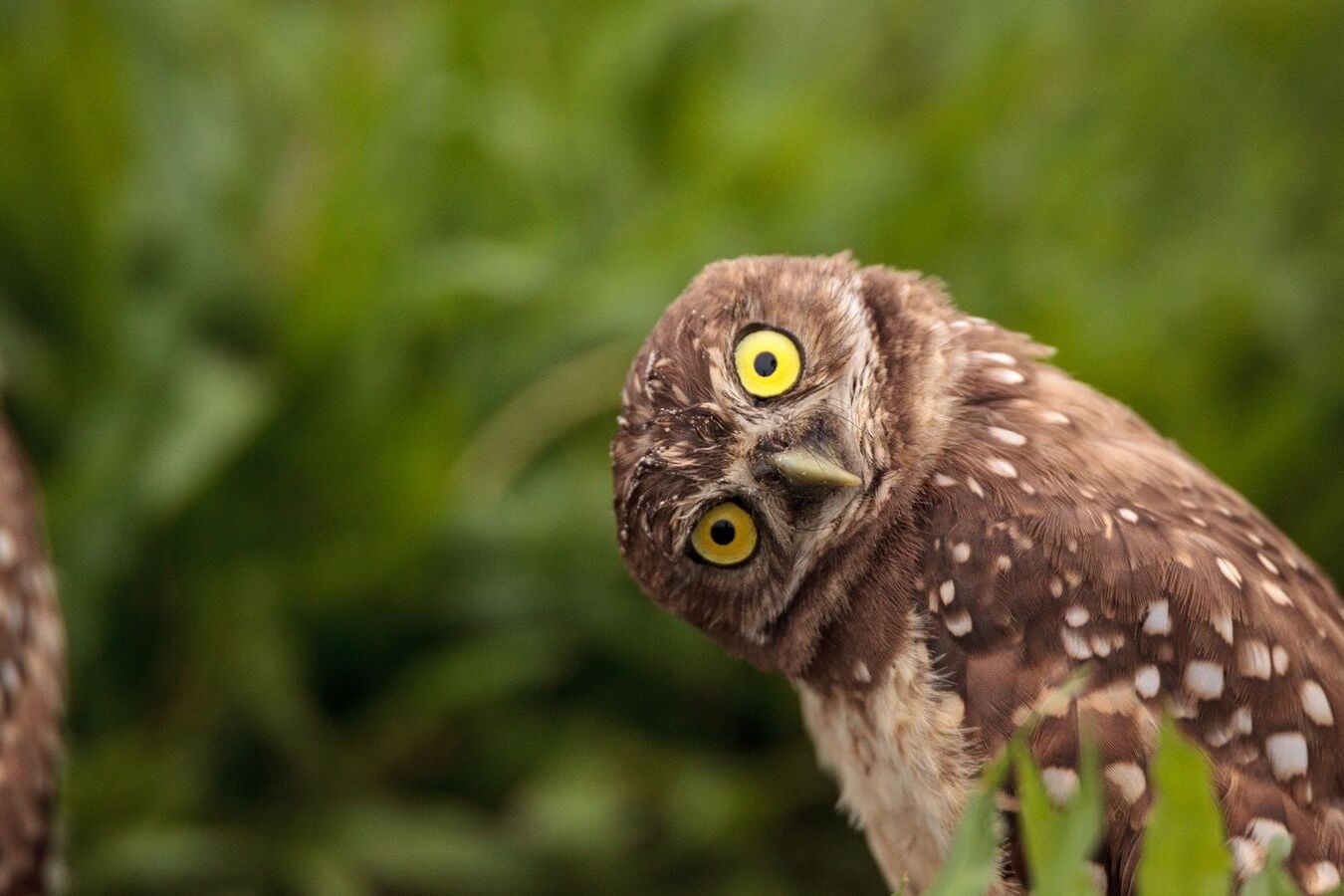
Ever wondered how animals perceive the world around them? From the keen eyesight of eagles to the extraordinary hearing of bats, animal senses are nothing short of amazing. Animal senses are specialized adaptations that help creatures survive and thrive in their environments. Some animals have senses far beyond human capabilities, allowing them to detect things we can only imagine. For example, did you know that sharks can sense electrical fields or that snakes can "see" heat? These unique abilities make the animal kingdom incredibly diverse and fascinating. Get ready to dive into 50 incredible facts about animal senses that will leave you in awe!
Key Takeaways:
- Animals have incredible senses, like dogs' super-sensitive noses and eagles' far-reaching vision. They experience the world in ways humans can only dream of!
- Marine animals, like dolphins and sharks, have unique senses to navigate and hunt underwater. Their abilities are truly fascinating and show the diversity of animal senses.
Animal Senses: A World Beyond Human Perception
Animals experience the world in ways that humans can only imagine. Their senses are often far more acute, allowing them to detect things we can't. Let's dive into some fascinating facts about animal senses.
-
Dogs' Sense of Smell: Dogs have up to 300 million olfactory receptors in their noses, compared to about 6 million in humans. This makes their sense of smell 40 times more sensitive than ours.
-
Cats' Night Vision: Cats can see in light levels six times lower than what a human needs. Their eyes have a high number of rod cells, which are more sensitive to low light.
-
Eagles' Eyesight: Eagles can see up to eight times farther than humans. They can spot a rabbit from more than three kilometers away.
-
Snakes' Heat Detection: Some snakes, like pit vipers, have heat-sensing pits on their faces. These pits allow them to detect the body heat of their prey, even in complete darkness.
-
Elephants' Hearing: Elephants can hear sounds up to 10 miles away. They communicate using infrasound, which is below the range of human hearing.
-
Bats' Echolocation: Bats use echolocation to navigate and find food in the dark. They emit high-frequency sounds that bounce off objects, helping them create a mental map of their surroundings.
Underwater Wonders: Marine Animal Senses
The ocean is a vast and mysterious place, and marine animals have developed unique senses to survive in this environment.
-
Dolphins' Echolocation: Dolphins use echolocation to hunt and navigate. They produce clicks and listen to the echoes that return, allowing them to "see" underwater.
-
Sharks' Electroreception: Sharks have special organs called ampullae of Lorenzini that detect electric fields produced by other animals. This helps them locate prey even when it's hidden.
-
Octopuses' Taste with Arms: Octopuses have chemoreceptors on their arms, allowing them to taste and touch simultaneously. They can detect chemicals in the water, helping them find food.
-
Whales' Communication: Whales use low-frequency sounds to communicate over long distances. These sounds can travel hundreds of miles underwater.
-
Crabs' Vibration Detection: Crabs have tiny hairs on their legs that detect vibrations in the water. This helps them sense predators and prey.
Insect Senses: Tiny but Mighty
Insects might be small, but their senses are incredibly powerful and specialized.
-
Bees' UV Vision: Bees can see ultraviolet light, which is invisible to humans. This helps them find flowers and navigate.
-
Moths' Sensitive Antennae: Male moths have antennae that can detect a single molecule of a female's pheromone from miles away.
-
Flies' Compound Eyes: Flies have compound eyes with thousands of tiny lenses. This gives them a wide field of view and helps them detect movement quickly.
-
Ants' Chemical Communication: Ants use pheromones to communicate. They leave chemical trails that other ants follow to find food or alert them to danger.
-
Butterflies' Taste with Feet: Butterflies have taste receptors on their feet. They land on plants to taste them and determine if they're suitable for laying eggs.
Birds' Sensory Marvels
Birds have some of the most remarkable senses in the animal kingdom, allowing them to navigate, hunt, and communicate effectively.
-
Owls' Silent Flight: Owls have special feathers that muffle the sound of their flight. This allows them to sneak up on prey without being heard.
-
Pigeons' Magnetic Sense: Pigeons can detect the Earth's magnetic field, which helps them navigate during long flights.
-
Hummingbirds' Color Vision: Hummingbirds can see a broader range of colors than humans, including ultraviolet light. This helps them find nectar-rich flowers.
-
Kiwis' Strong Sense of Smell: Kiwis have nostrils at the end of their beaks, giving them an excellent sense of smell to find food underground.
-
Woodpeckers' Shock Absorption: Woodpeckers have a special skull structure that absorbs the shock of pecking, protecting their brains from injury.
Mammals' Extraordinary Senses
Mammals have developed a variety of senses to adapt to their environments, from the deepest forests to the highest mountains.
-
Bears' Sense of Smell: Bears can smell food from miles away. Their sense of smell is seven times better than a bloodhound's.
-
Dolphins' Sonar: Dolphins use sonar to navigate and hunt. They emit clicks and listen to the echoes, creating a detailed map of their surroundings.
-
Bats' Echolocation: Bats use echolocation to find food and navigate in the dark. They emit high-frequency sounds that bounce off objects, helping them "see" with their ears.
-
Moles' Touch Sensitivity: Moles have sensitive whiskers and snouts that help them detect vibrations and navigate underground.
-
Platypuses' Electroreception: Platypuses have electroreceptors in their bills that detect electric fields produced by prey, helping them hunt in murky waters.
Reptiles' Sensory Adaptations
Reptiles have evolved unique senses to thrive in their environments, from deserts to rainforests.
-
Chameleons' Independent Eyes: Chameleons can move their eyes independently, allowing them to look in two different directions at once.
-
Geckos' Night Vision: Geckos have excellent night vision, allowing them to hunt insects in the dark.
-
Crocodiles' Pressure Sensors: Crocodiles have pressure sensors on their jaws that detect vibrations in the water, helping them locate prey.
-
Turtles' Magnetic Navigation: Sea turtles use the Earth's magnetic field to navigate during long migrations.
-
Lizards' Heat Sensing: Some lizards can detect heat with specialized sensors, helping them find warm spots to bask.
Amphibians' Unique Senses
Amphibians have developed senses that allow them to thrive in both water and on land.
-
Frogs' Hearing: Frogs have excellent hearing and can detect a wide range of frequencies. This helps them communicate and avoid predators.
-
Salamanders' Chemoreception: Salamanders use chemoreception to detect chemicals in the water, helping them find food and mates.
-
Newts' Regeneration: Newts can regenerate lost limbs, which is a unique sensory adaptation that helps them survive injuries.
-
Toads' Vibration Detection: Toads can detect vibrations in the ground, helping them sense approaching predators.
-
Caecilians' Tentacles: Caecilians, a type of legless amphibian, have tentacles on their heads that help them detect chemicals in the environment.
Fish Senses: Life Underwater
Fish have developed senses that allow them to thrive in their aquatic environments.
-
Sharks' Smell: Sharks can detect a single drop of blood in an Olympic-sized swimming pool. Their sense of smell is incredibly acute.
-
Catfish's Taste Buds: Catfish have taste buds all over their bodies, allowing them to taste their environment and find food.
-
Salmon's Magnetic Sense: Salmon use the Earth's magnetic field to navigate during their long migrations.
-
Anglerfish's Bioluminescence: Anglerfish use bioluminescent lures to attract prey in the dark depths of the ocean.
-
Clownfish's Hearing: Clownfish have excellent hearing, which helps them communicate and avoid predators.
Invertebrates' Sensory World
Invertebrates have some of the most unique and specialized senses in the animal kingdom.
-
Spiders' Vibration Detection: Spiders can detect vibrations in their webs, helping them sense when prey is caught.
-
Bees' Dance Language: Bees communicate through a dance language, which conveys information about the location of food sources.
-
Octopuses' Camouflage: Octopuses can change color and texture to blend into their surroundings, helping them avoid predators.
-
Jellyfish's Light Sensitivity: Jellyfish have light-sensitive cells that help them navigate and find food.
-
Starfish's Tube Feet: Starfish use their tube feet to sense their environment and find food.
Sensory Superpowers: Extraordinary Abilities
Some animals have sensory abilities that seem almost superhuman, allowing them to perform incredible feats.
-
Pigeons' Homing Ability: Pigeons can find their way home from hundreds of miles away, using a combination of visual cues and the Earth's magnetic field.
-
Dogs' Cancer Detection: Some dogs can detect cancer in humans by smelling volatile organic compounds produced by tumors.
-
Elephants' Seismic Communication: Elephants can communicate through seismic signals, detecting vibrations in the ground with their feet.
-
Dolphins' Healing Powers: Dolphins have been observed using marine sponges to protect their snouts while foraging, showing a level of tool use and problem-solving.
The Wonders of Animal Senses
Animal senses are truly fascinating. From the sharp vision of eagles to the ultrasonic hearing of bats, each species has evolved unique ways to interact with their environment. These adaptations help animals find food, avoid predators, and communicate with each other.
Understanding these senses not only gives us insight into the animal kingdom but also inspires technological advancements. For instance, sonar technology mimics the echolocation used by dolphins and bats.
Next time you see a dog sniffing around or a cat's eyes glowing in the dark, remember there's a whole world of sensory experiences happening beyond human perception.
Exploring these facts reminds us of the incredible diversity and complexity of life on Earth. So, keep your curiosity alive and continue learning about the amazing ways animals experience the world.
Frequently Asked Questions
Was this page helpful?
Our commitment to delivering trustworthy and engaging content is at the heart of what we do. Each fact on our site is contributed by real users like you, bringing a wealth of diverse insights and information. To ensure the highest standards of accuracy and reliability, our dedicated editors meticulously review each submission. This process guarantees that the facts we share are not only fascinating but also credible. Trust in our commitment to quality and authenticity as you explore and learn with us.


